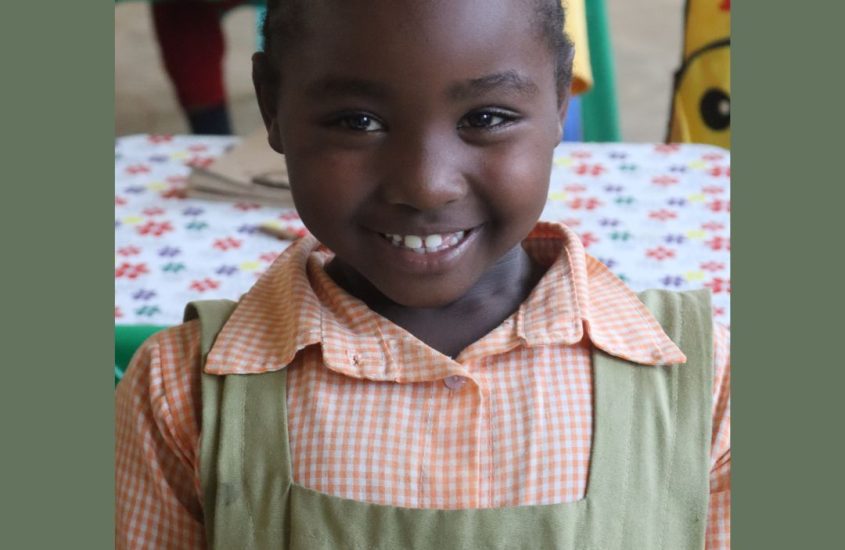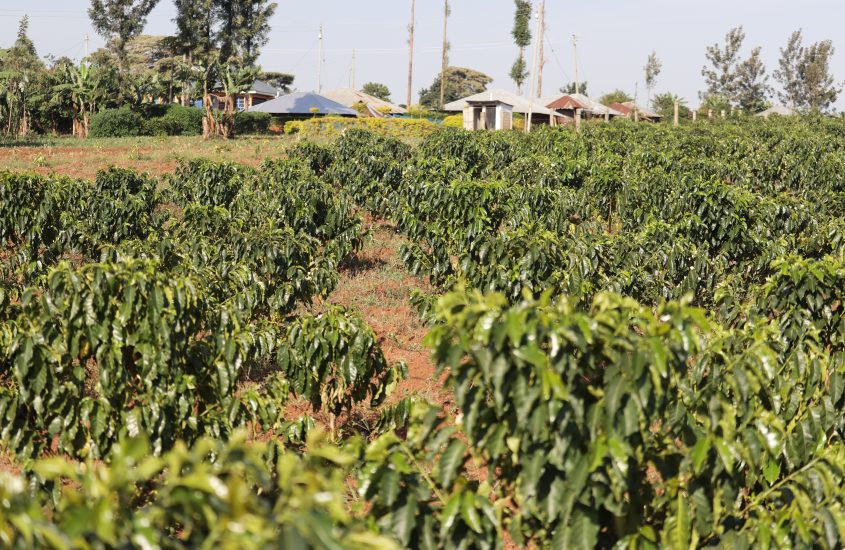Voices from the Classroom: A Kenyan Story on Making a Difference
As part of my yearlong travels, it was important for me to end the year by becoming more purposeful. Connecting my world with that of another place so different from my reality, hoping to serve as a global citizen in changing a person’s life. During my 18 days in Kenya, I visited a primary school in the town of Kisii within a school region of 154,175 people .
I spent three days in Kisii learning and assisting a privately funded school in what appears to be a miracle of sorts. Both an inspirational and somber experience of what life is like in parts of Sub-Saharan Africa. Here is my story about the GRACE Initiative and how they are making a difference…
But First, A Brief Overview of the Education System in Kenya
The Kenyan education system consists of eight years of compulsory education, starting at age 6, and four years at the secondary level, contingent on the student passing a national exam. In primary public schools, the average completion among both boys and girls is approximately 63-68%. Of those students that enrolled in public secondary schools, only 53% complete their education due to socio-economic factors such as child labor to supplement family income, teenage pregnancies, early marriages, poverty and the lack of mentorships and resources.
Public education in Kenya is mired with severe shortages, beginning with insufficient and poorly trained teachers, inadequate facilities, and overcrowded classrooms. Imagine a teacher having to teach 80 students in a poorly equipped classroom. Parents and their children are held hostage unless they can afford to send them to a private school. Many families make the ultimate financial sacrifice to ensure their children can receive a better education. Sadly, many more children, especially in rural communities such as Kisii grow up without the opportunities and skills that would enable them to break the cycle of poverty and hopelessness.
The Grace Initiative
Private schools such as the Greater Grace Academic Centre run and managed by Grace Initiative offers parents and children an alternative to a better future. As expected, they do not receive any funding from the government to subsidize operating cost yet must follow the nation’s school standards and curriculum. Funds to sustain the Grace Academic Centre are a combination of donations, tuition fees, earned income and volunteer work from both parents and the community.
After a week in Nairobi, I boarded a flight to Kisumu to be picked up for a 70-minute ride to the town of Kisii. The drive takes you through much of the county’s rural area, where you witness the arcadian and rustic living of Sub-Saharan African communities. In Kisii, you are immediately exposed to an entirely different world of poverty. The day-to-day struggle of families seeking to put food on the table with the hope of a better life for themselves and their children.
The Grace Initiative was founded and is led by Joseph Matara, a Kenyan who resides in New Jersey. Over the last 15 years, Joseph has been working on the creation of a primary school on ancestral land his parents left their children. He is one of ten siblings who grew up in Kisii where the community pitched in to send him and his older brother to the US to attend college. Undoubtedly, an investment by the community that keeps on giving. The African proverb “It takes a village to raise a child” couldn’t be more truthful.
More on the School…
The school grounds are quite vast, allowing for several buildings to support its long-term growth as a community school model that encapsulates both a holistic and sustainable agenda now 14 years old. The school currently occupies several buildings. One is constructed from shipping containers, a novel cost-effective approach to creating classroom space now and in the near future.
The school currently serves 138 children from Preschool to 7th grade with the goal of adding grades 8 and 9. Since first opening its doors, the school has added a new grade each year. Depending on the grade level, the tuition fees range from $116.00 to $209.00 for the entire year (yup, this is not a typo). Imagine paying teachers $50 to $100 a month, requiring them to take on several roles to ensure the school offers a comprehensive approach to helping children and their parents. The entire operating budget for the school is approximately $170,000. It’s amazing how the staff stretches every dollar. Cost of living is very low, allowing the school to do more with less.
Not all students pay as there is a commitment to ensure families with no income can also benefit from a private school education. Grace Initiative supports approximately 77 students that are given full and partial scholarships to attend the school. Mostly to single heads of household who have little to no income, living off the land in huts with no running water or electricity. I was able to visit three homes and witnessed what was truly a somber experience.
Teaching impoverished children is only one of several goals Grace Initiative is engaged in. It has a Health and Nutrition Advocate that works with teachers and parents on implementing prevention and intervention strategies such mental health, domestic violence, nutrition and health care needs. It also has a feeding program which includes free lunch for the students and the distribution of agricultural products to families who have no income. Recently, the school started a pilot program on STEM seeking to increase its footprint in the technology field (more on this later), along with a Youth Shark Tank program to teach older students’ entrepreneurial skills.
Grace‘s Commitment to Sustainability
Unlike many private schools, Grace has a strong commitment to diversifying its funding base to ensure the long-term sustainability of the school and its programs. Joseph spends a significant amount of time raising funds from the US, along with creating volunteer opportunities involving church groups and high schools. Fundraising and school fees are not enough to sustain the school and are less predictable.
To make up the difference, earned income activities are an important part of what the school does. The school owns and manages a farm that grows a wide range of fruits and vegetables, along with cows and chickens. Farming supports not only the school lunch program but also sells both produce and seedlings as part of their earned income strategies. The staff is currently pursuing a partnership with a local farmer to market and sell coffee with a portion of the proceeds going to the school.
The Creation of a STEM (Technology) Center
Creating a STEM (Technology) Centre is their next income related project and one that I want to help them achieve. Presently, they offer some technology training to a small cohort of older students. A more expansive program is needed to address several key objectives. They are: 1) Enhancing the school curriculum to attract more paid students not offered by the area’s schools; 2) Offer technology training, use of equipment and internet to interested adults for a fee, presently in high demand; 3) Secure a government contract to annually train teachers.
Within the school grounds, there is a half-finished building being developed for the science laboratory. The plan will be to add another floor on top of the laboratory for the STEM Centre/ Tech Hub. Joseph recently secured a $20,000 grant for the completion of the second floor by 2025.
Next step will be to both furnish and equip the STEM Centre to focus on coding, robotics, digital literacy, and problem-solving skills. A breakdown of what is needed is listed below.
Furniture: Ergonomic desks and chairs for students, workstations for computers, and storage for materials.
Computers/Laptops: For coding, research, and digital projects.
Interactive Whiteboard/Smartboard: For interactive lessons and presentations.
Robotics Kits: For hands-on learning in robotics and coding.
3D Printer: For creating models and prototypes.
Basic Electronics Kits: For learning about circuits and basic electronics.
Internet Access: Reliable Wi-Fi or Ethernet for online resources and connectivity.
Software Licenses: Educational software for coding, design, and STEM activities.
Online Training Resources: Subscription to platforms offering STEM teaching resources.
The goal for 2024 -2025 is to raise $10,000 with half coming from individuals and the rest from small international grants. Phase #1 will be to equip the facility, followed by Phase #2 teacher training and workshop development.
My commitment is to help them raise funds and provide community development assistance to ensure the school sustainability. I am asking my Limited Limitless Living community, family and friends to assist me raise these funds through any of the following ways:
1. Donation, any amount will be appreciated. Click here to access Grace website where you can learn more about the school and donate.
2. Join me in asking others to donate, especially during the holiday months.
3. Provide the contact of a person or company that can donate equipment.
4. The contact of a funder that you may know that may consider funding this project.
One Last Thing…
Are you planning to travel to Africa or take part in a Kenyan safari? If so, would you consider volunteering for several days at the school? If interested, let me know. I promise you it will be an impactful and unforgettable experience.
I have included photos of my three days in Kiisi, consisting of the school grounds, the children and what daily living looks like in this part of the world. On the school, there are photos of several classrooms, the farm and the school buildings to offer readers a visual of what this school is like. I am hoping you would help me achieve this attainable goal. Lastly, I leave you with the following quote that I always found to be truthful.
Sometimes it takes only one act of kindness and caring to change a person’s life.— Jackie Chan
Donation Button




















































No Comments